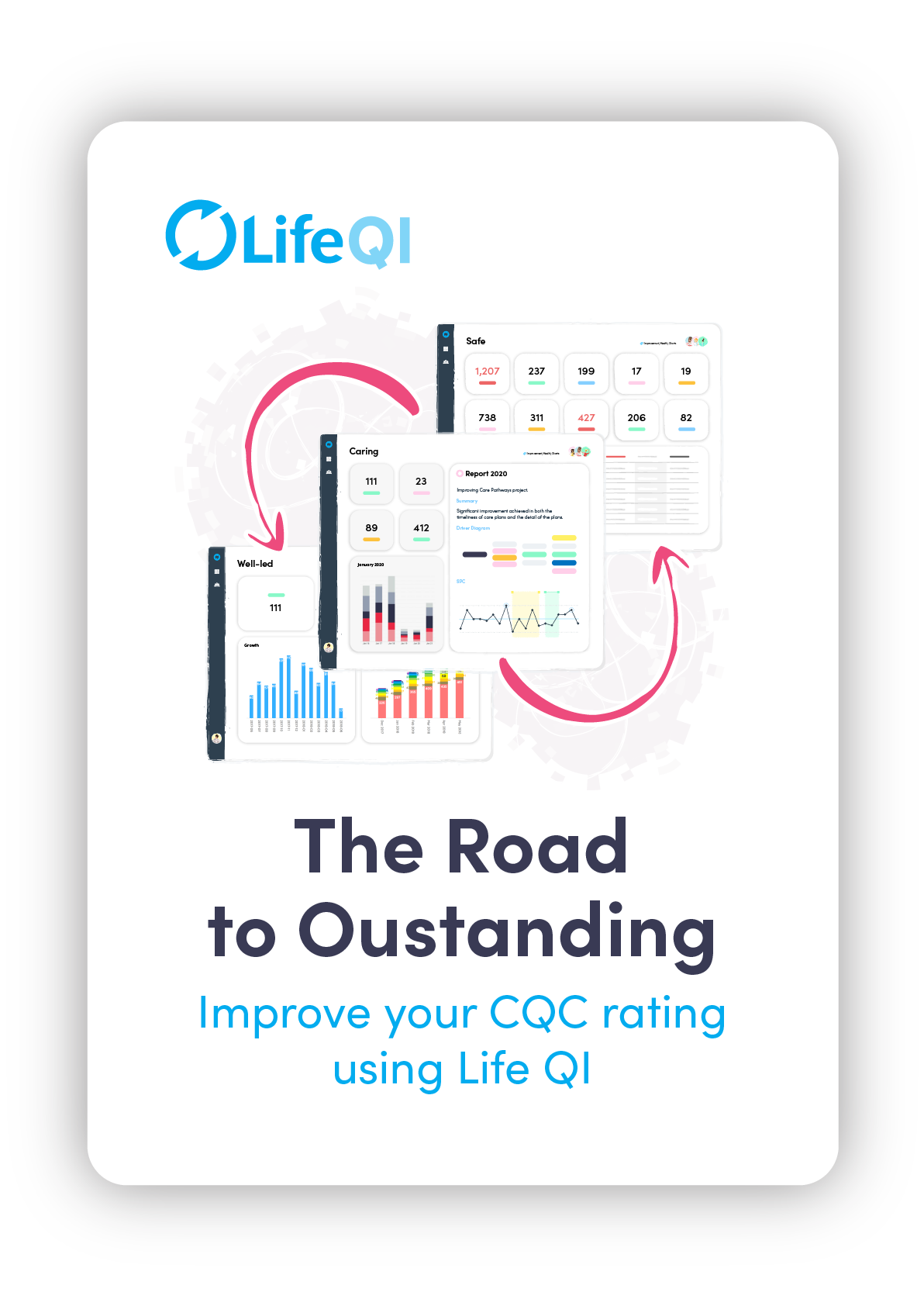The Road to Outstanding - Improve your CQC rating using Life QI

For many healthcare providers, reaching an ‘outstanding’ rating with the Care Quality Commission (CQC) can seem like a difficult task. For others, it’s an ambition that is at the centre of their mission. An outstanding CQC rating is recognition that you’re meeting the highest standards set. It’s also a testament that your care recipients are getting a first class service.
In our free eBook, we collected some useful tips that may help you if your ambition is to be outstanding.
Get Your Free Guide
What's inside
Achieving an outstanding CQC rating starts with good leadership to be able to make changes to the level of service provided.
Learn how Trusts achieve and evidence the requirements of the Well-led assessment, helping you on your way to improving your CQC rating.

|
Embedded improvement cultureThe importance of being able to evidence an embedded systematic improvement culture has never been greater, but Life QI can help you address the CQC’s requirements. |

|
Standardised improvement tools and methodsUsing standardised QI tools can underpin the effective and repeatable delivery of all your improvement projects so are key foundational elements of your QI capability. |

|
Evidence of QI strategy and plansLife QI provides organisations with a range of features they can use to categorise and organise strategic themes and work which can be tracked easily by opening a dashboard. |

|
Evidence of organisation-wide trainingImprovement skills are a core competence of healthcare professionals. Making QI training a part of the daily activities can also improve staff engagement. |

|
Evidence of projects and programmesEngaging and enabling teams to deliver improvement projects and programmes is at the heart of Life QI. With the real-time analytics dashboards you can evidence all your improvement work at any level in the Trust. |

|
Evidence of action taken from incidents and auditsLife QI can be used to run improvement projects that result from incidents and audits, and to prove that the gains are sustained by using SPC charts. |

